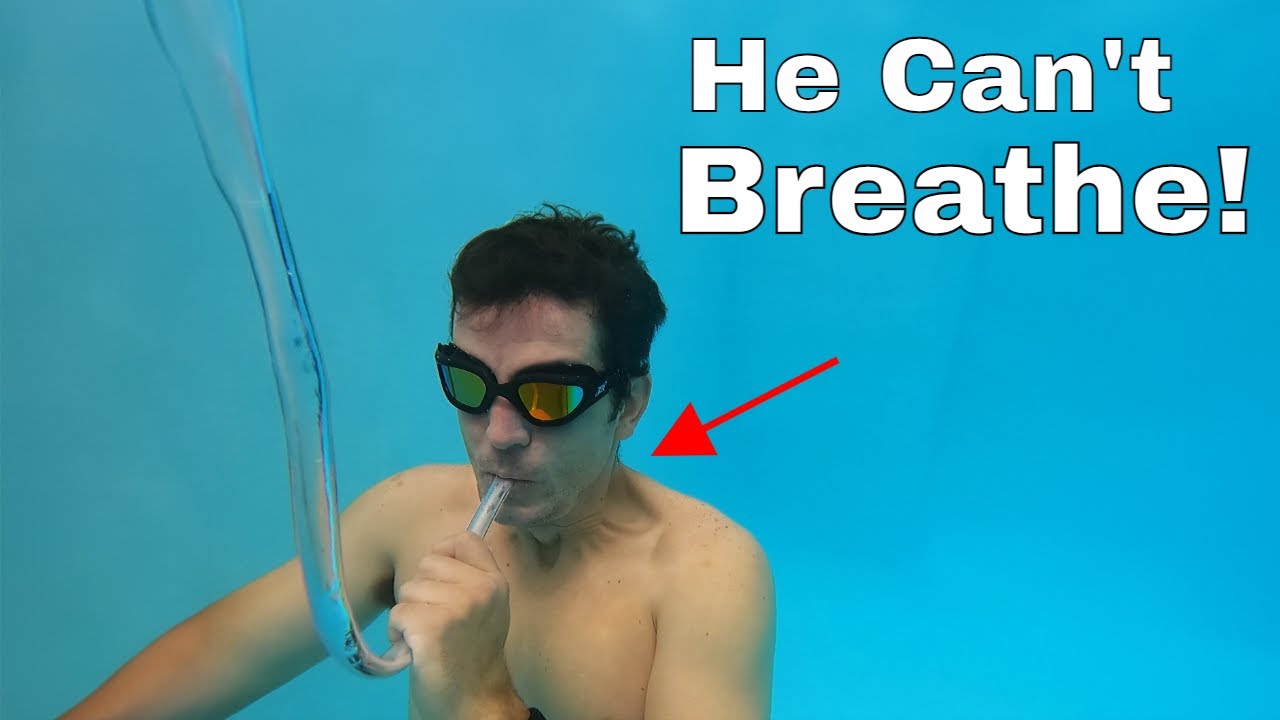So much for Donald Duck and the nephews breathing through reeds while hiding underwater.
Reeds are relatively rigid. That tube crushed with very little depth and thus sealed off. I submit that they would have had a different result if they used a rigid tube.
Different is not clearly better. An open tube might make it easier for the water pressure to crush the chest.
I think that even if you had, say, a rigid iron pipe running to the surface, there’s no way the diaphragm could inflate the chest against the pressure of the water once you were down one metre or more underwater. One of the tricky things about a SCUBA regulator is the need to supply breathing air at close to the ambient water pressure regardless of the depth of the diver.
I haven’t yet had time to view the video, but what must be understood is the concept of “dead space” ventilation. “Dead space” is that part of the respiratory anatomy in which no gas exchange occurs - including the nasal passages, pharynx, trachea, and bronchi. It amounts to about one-third of tidal volume. So, it becomes apparent that tube volume adds to dead space and is critical in determining the ability to respire adequately.
If the volume of any tube through which one tries to breathe is any significant proportion of the tidal volume (about 500cc’s), the first part of the next breath (or more, depending on the tube volume) consists of exhaled gases from the prior breath. While one may temporarily continue to extract some amount of oxygen (exhaled gas contains some residual oxygen, as it isn’t all absorbed), carbon dioxide cannot be blown off; it quickly accumulates when one rebreathes exhaled gas - which consists of 4 - 5% CO2.
If it were possible to draw air from the tube to the surface while submerged, you should be able to exhale into the water while closing off the pipe to keep water from rushing in and filling it (or fix a check valve to the end to block inflow of water). But since you can’t draw in air at surface pressure while your chest is compressed by the surrounding water, the question is moot.
SCUBA divers use a similar system. The regulator and check valves in the mouthpiece draw air at ambient water pressure when the diver inhales and release exhaled air to the water. (This is with the most common open-circuit diving gear. With rebreathers that scrub CO₂ and replenish it with oxygen, things are more complicated, but there are still check valves that supply air from the reservoir on inhalation and route exhaled air to the regeneration gear.)
Very good points. The physiology I revealed, as you say, would apply even if one could, mechanically, manage to breathe underwater. The principle applies even in the ambient atmosphere. In the absence of an exhalation valve, which vents exhaled air into the atmosphere, it would not be possible to allow life-sustaining oxygenation and CO2 ventilation (removal) through a tube or pipe in the proportions described in my previous comment; it would only work for small volume tubes, i.e. 100cc’s or so, for brief periods of time.
